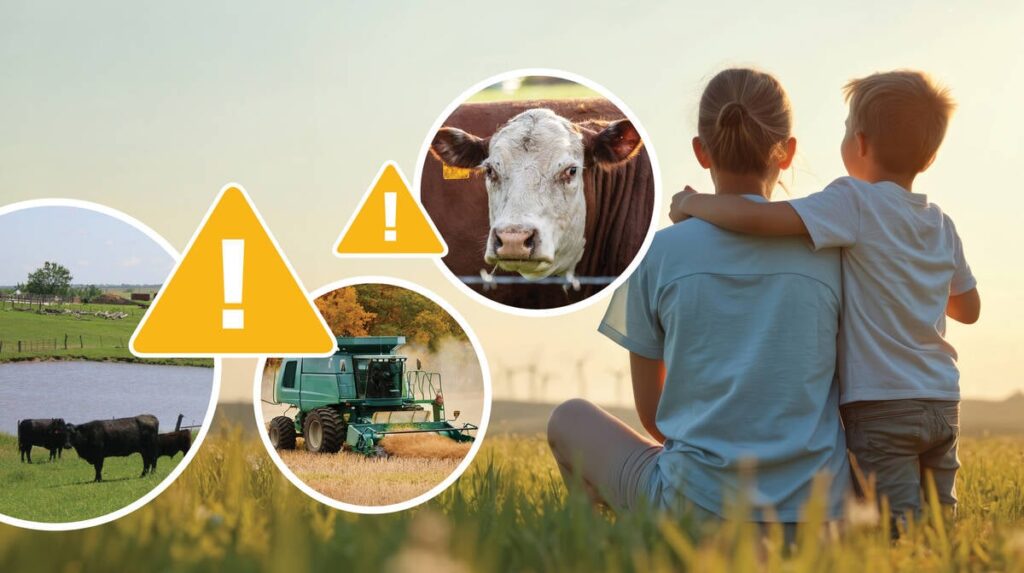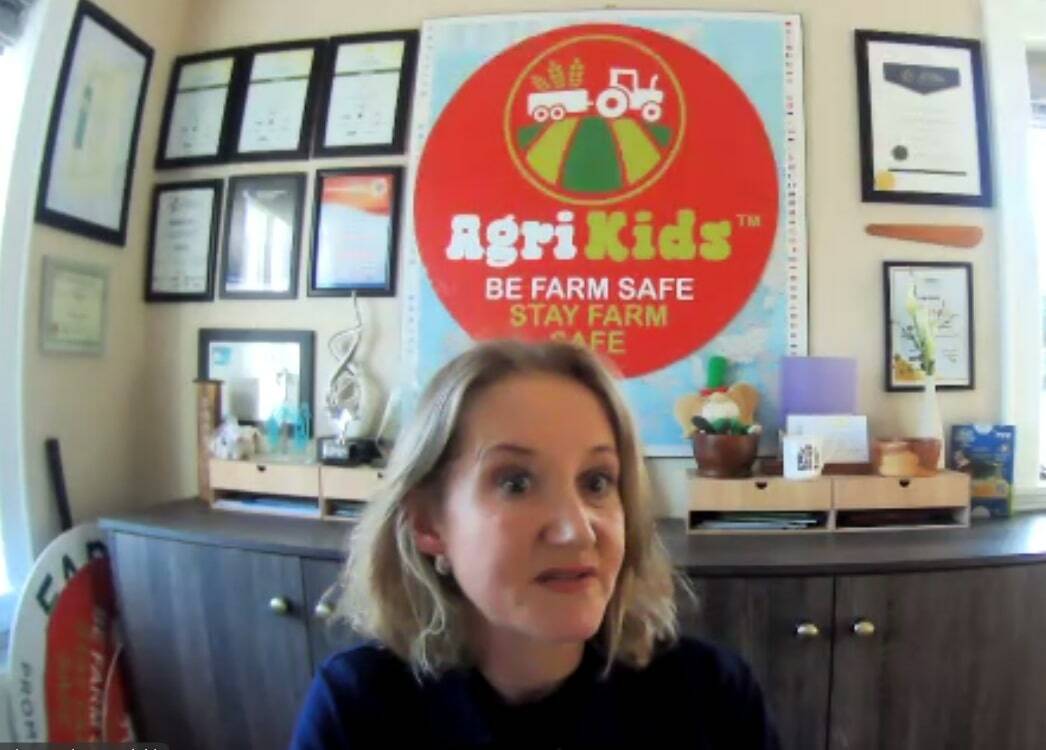Irish advocate urges safer farms for Canadian families

Glacier FarmMedia – Families can make farms safer for their children by following a few simple concepts.
It beings with empowering children, acknowledging risk, and rethinking long-held habits, believes Alma Jordan, founder of the award-winning Irish social enterprise program AgriKids.
Jordan grew up on a beef and crops farm in Kildare, Ireland, and now farms with her husband in County Meath, founded AgriKids following a particularly tragic year for farm accidents in her country.
Read Also


Succession: Where to begin?
Glacier FarmMedia – I recently polled farm managers about what big projects they were planning for this year. Half the…
“It was the death of two little boys in 2014, I suppose, that motivated me to want to do something more on this particular topic,” she said.
Preventing tragedies on farms means empowering children as safety ambassadors, rethinking risky habits, and addressing the emotional toll of treating the farm as both home and workplace.
That year turned out to be a record-breaking one in Ireland for all the wrong reasons. A total of 32 people died in farm accidents, five of whom were children, Jordan said at a virtual fireside chat hosted by the Canadian Agricultural Safety Association (CASA) on May 14.


photo:
Farm safety starts with kids, and changing how families see risk, AgriKids founder Alma Jordan said during a virtual fireside chat hosted by the Canadian Agricultural Safety Association (CASA) on May 14. Photo: Screen Capture/Canadian Agricultural Safety Association
The statistics from Ireland illustrate the disproportionate danger in agriculture. Six per cent of the Irish population is employed in farming and agriculture, but 50 per cent of workplace fatalities consistently take place on a farm, Jordan said.
Statistics from Canada show similar patterns. There have been 624 agriculture-related deaths in Canada from 2011 to 2020, and about 62 people die on farms every year, according to Canadian Agricultural Injury Reporting data. Of those, 54 per cent of those fatalities were machinery related and 58 per cent of those were farm owners and operators, and 11 per cent were their children.
Engaging children as safety ambassadors
Jordan’s approach to keeping kids safe on the farm focuses on engaging, educating and empowering them to become farm safety ambassadors, similar to how children have successfully championed environmental causes.
“I saw firsthand how influential and powerful children were in bringing the reduce, reuse, recycle message from a classroom setting and bringing it home and motivating their own parents to change their own behaviors around recycling,” she said.
If children can get excited about those things, Jordan believes they can show the same enthusiasm when talking about tractors, bulls, slurry and manure — all things they need to learn about farming.
The home and workplace paradox
A key challenge in farm safety lies in the dual nature of farms as both workplaces and homes.


“Creating that boundary, that level, is key in everything that we do,” Jordan said. “Parents do have a fear, but they have to bring children onto farms or into situations, because they have no other option.”
There’s also a disconnect that often exists between home safety and farm safety practices — something Jordan has even seen within her own family.
“My own husband, with our son…was literally rounding off the edges of every table with bubble wrap, padding and sponges, and putting hooks on doors so they didn’t catch on fingers or he couldn’t open them. Yet he’d bring him down to the farm, and he’d be getting him up on the back of a horse…and I just went, what is happening there?”
Multiple educational approaches
AgriKids employs multiple tools to reach children, including storybooks, digital games, virtual reality platforms and school programs. Jordan’s inspiration for using storybooks came from observing her son’s interest in a children’s program called Tractor Ted.
“Every evening we’d have to do story time, and I’d be reading the books to him, and we’d be talking about them,” Jordan said. “I just felt, ‘isn’t this a very inoffensive, easy way to include safety messages to our children just before they go to sleep?’”
The storybooks feature a character called Mr. Brambles, who supports the children in the story by helping them to learn the farm safety message. Farm-themed books have also helped engage reluctant readers, Jordan said.
“I have found that children—mostly boys in that 10 plus [age range]—stop reading, but because I have a book called ‘The Red Tractor,’ a teacher told me that that book went around every single boy in the class three or four times, just because it was tractors and it was a story about a farm.”
Working with schools and teachers
Jordan has developed materials for schools across Ireland, where farm safety is part of the required curriculum. Understanding teachers’ needs has been crucial to the program’s success, she said
“A lot of teachers may not come from a farm…what I kind of recommend is that not only are the resources very self explanatory, but that the children can lead the discussion also.”
Her approach involves creating flexible, teacher-friendly resources that can be taught over the course of one hour, one day, one week or six to eight weeks of intensive programming. Jordan encourages teachers to involve community members in their lessons, as well.
“I ask the teachers to reach out into your area and maybe engage with a local policeman, maybe engage with a local farmer, machinery retailer to come in and actually help you deliver the content too. When a party comes in, that makes the experience a lot more real and a lot more relevant,” she said.
Community-wide impact of farm accidents
The impact of farm accidents extends far beyond the immediate family, affecting entire communities for years. At one school she visited, an altar was set up in memory of an eight-year-old boy who had been killed in a quad bike accident.
“His father had just received the quad bike, and decided he was going to bring him out for a little go—a little spin, as we call it. And unfortunately, it ended in a tragedy,” Jordan said.
At another school, a plaque was installed in the hall in memory of a child that had been killed in a tractor accident. Even 11 years later, the school still spoke about it.
The ripple effects of farm accidents touch many lives, Jordan said.
“If you were to really look at the layers you have, obviously, the person who’s injured or has passed, then you have their family, you have friends, you’ve got relations, community, and it goes out.”
Media influence and social media challenges
While social media sometimes has a role in sometimes glorifying unsafe farm practices, Jordan believes change must first happen in the broader media world. She compared it to other safety norms that have changed overtime, including wearing seatbelts.
“Now, people don’t even think about it. You would never see a car commercial with somebody not wearing a seatbelt. That’s the level of change we have to get to.”
People who share social media posts of eight-year-olds driving tractors or similar shots aren’t helping the situation, Jordan said.
“It’s what I would call social media vanity over sanity.”
Jordan works with a farm charity who helps and supports families following a death or injury on their farm.
“What they say about images such as these…is that they serve to trigger those people who have been impacted by a farming accident.”
Practical solutions for safer farms
Many safety improvements can be simple and inexpensive. For families looking to take immediate action on farm safety, Jordan recommends a simple first step — taking a look around the farm and assessing what risks it carries. Then, a traffic light system can be created, featuring “no-go” areas that kids are to stay out of at all times.
Keeping kids safe on the farm isn’t just about taking proper physical precautions, but also about mental well-being, Jordan added.
“Mental health and well-being goes hand in hand with the whole safety aspect, so it always has to be factored in.”
The forum was part of CASA’s Kids FarmSafe Week, which ran from May 12-18.
Source: producer.com


